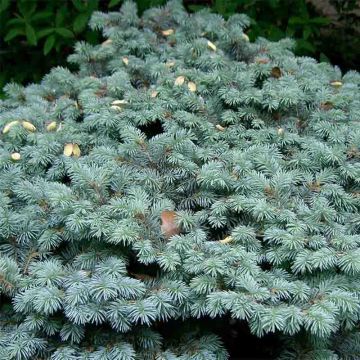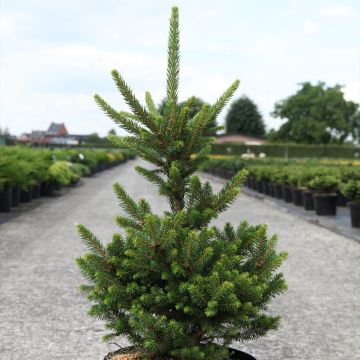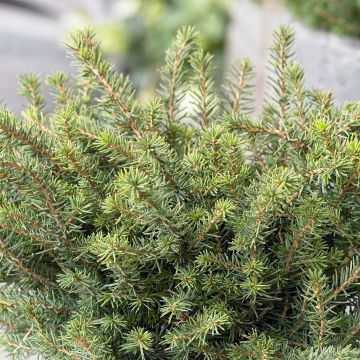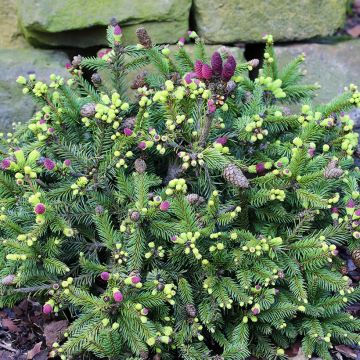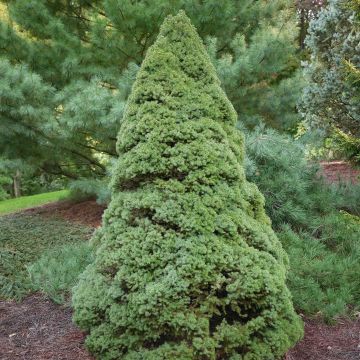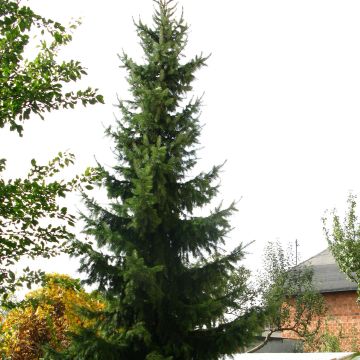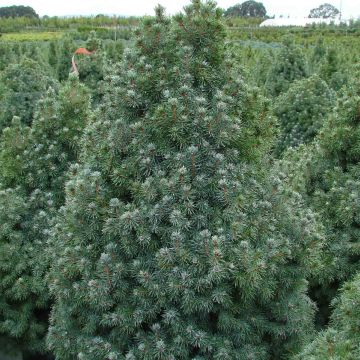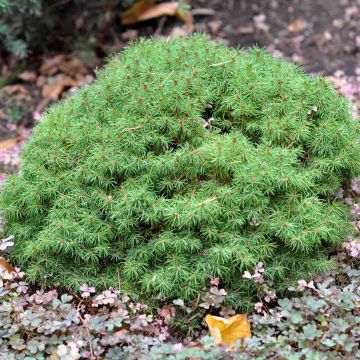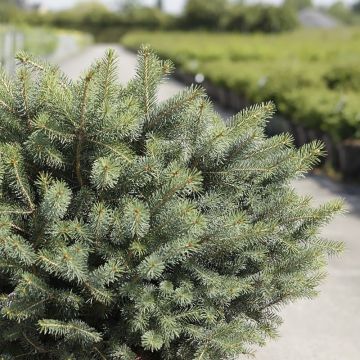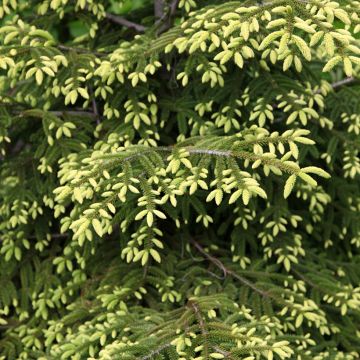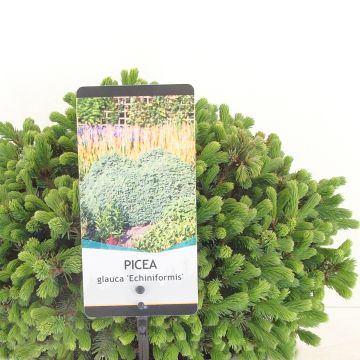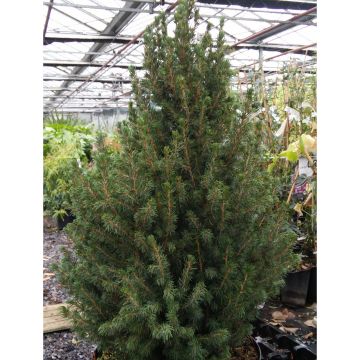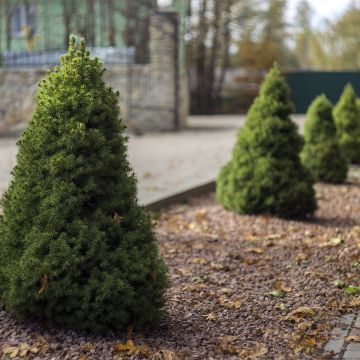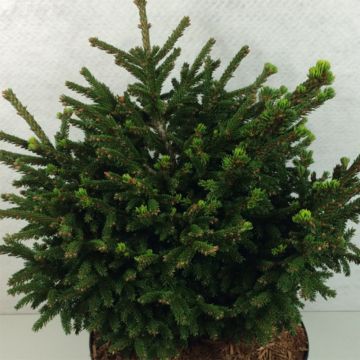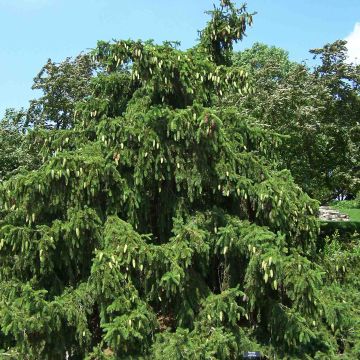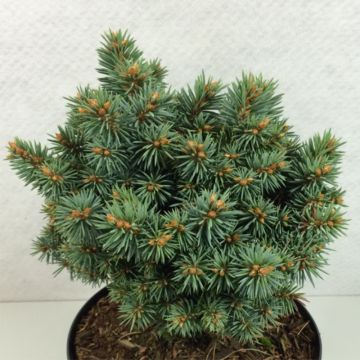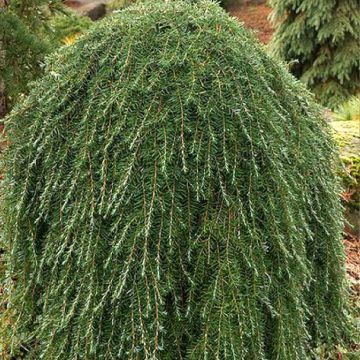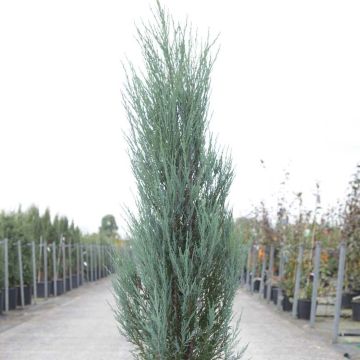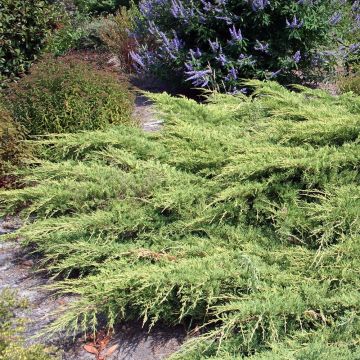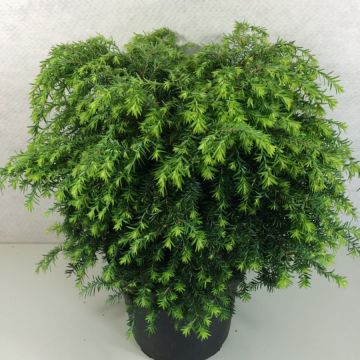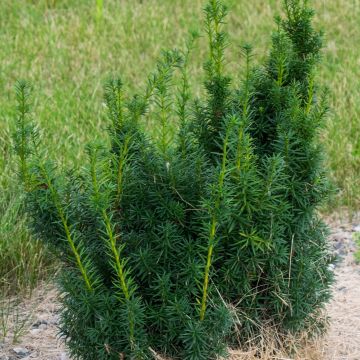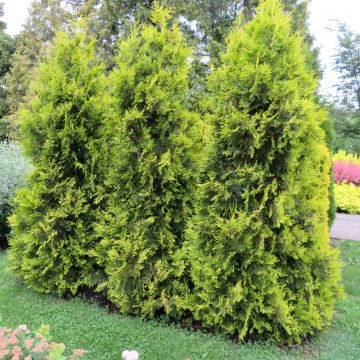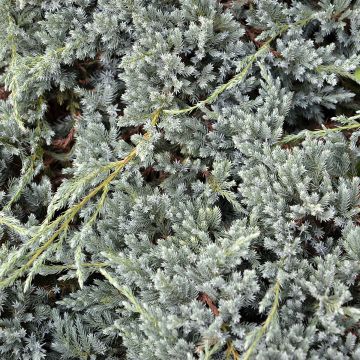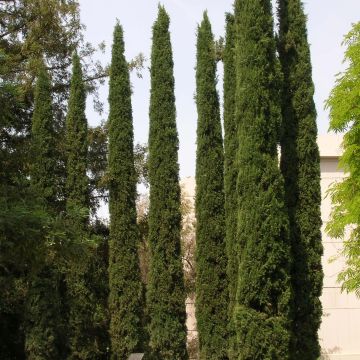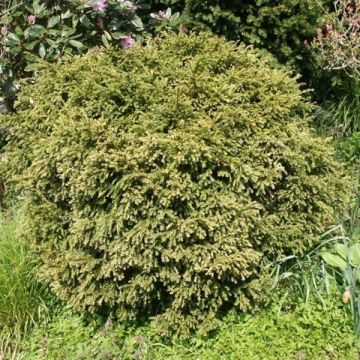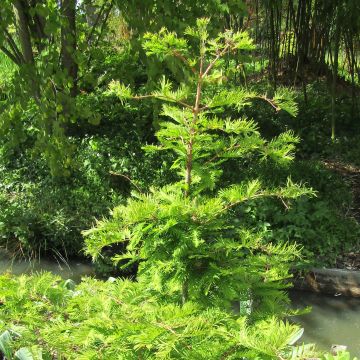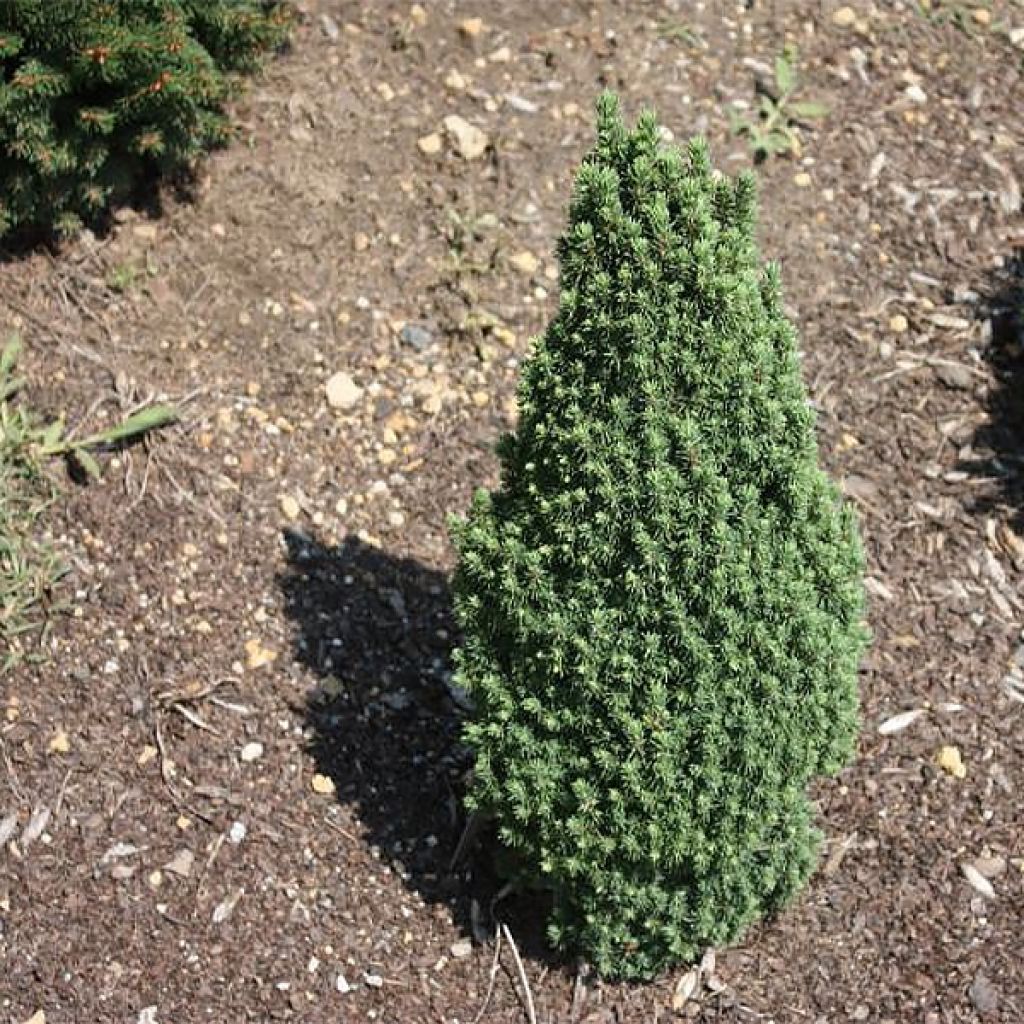

Picea glauca Piccolo - White Spruce
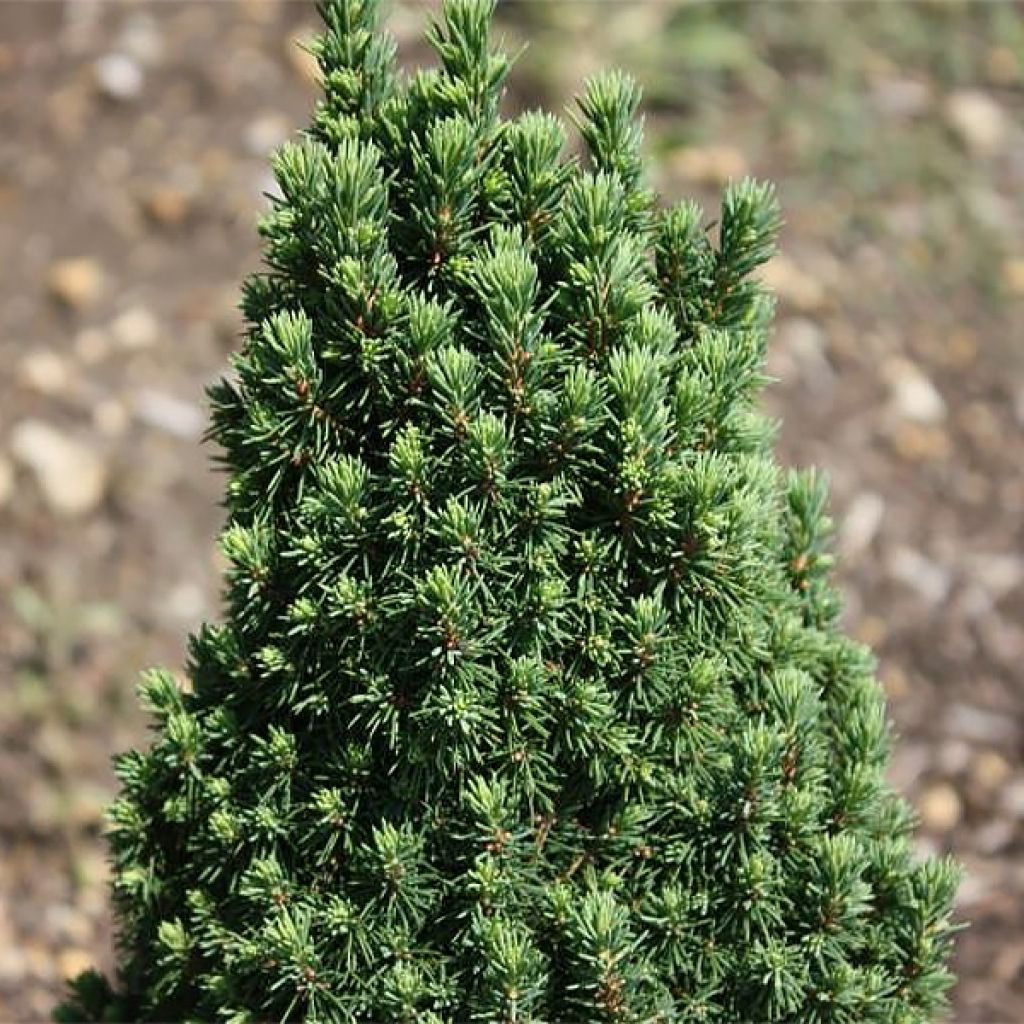

Picea glauca Piccolo - White Spruce
Picea glauca Piccolo - White Spruce
Picea glauca Piccolo
White Spruce, Canadian Spruce, Skunk Spruce, Cat Spruce, Black Hills Spruce, Western White Spruce, Alberta White Spruce, Porsild Spruce
Beautiful young conifer. Water the young plant perfectly.
Isabelle, 27/03/2023
Why not try an alternative variety in stock?
View all →This plant carries a 24 months recovery warranty
More information
We guarantee the quality of our plants for a full growing cycle, and will replace at our expense any plant that fails to recover under normal climatic and planting conditions.
From €5.90 for pickup delivery and €6.90 for home delivery
Express home delivery from €8.90.
Does this plant fit my garden?
Set up your Plantfit profile →
Description
Picea glauca 'Piccolo' is a dwarf variety of white spruce forming a delightful small bush with a conical habit. Its dense green foliage is composed of short and erect needles. Its very slow growth rate makes it suitable for rock gardens, provided that the soil retains some moisture, as it does not tolerate drought. It will also thrive in Japanese or contemporary gardens, where its well-defined sculptural shape will be a real attraction.
Picea glauca, also known as White Spruce, Canadian Spruce or Glauca Spruce, is an evergreen conifer native to Canada. This species belongs to the Pinaceae family, like Cedars, Firs, Pines, or Larches. In its natural environment, it grows slowly and has a fairly variable habit depending on its habitat, but is usually conical or pyramidal with a broad base. This tree can reach a height of 25m (82ft). This species is traditionally used for paper production. It can live for many years (200 years or more).
The 'Piccolo' variety, derived from this species, is a dwarf form with a compact, conical habit. Its growth is very slow; it will reach about 1m (3ft) in height with a spread of 60cm (24in) by the age of 10 years, and will continue to grow to around 1.5m (5ft), or slightly more. It produces short and tightly packed branches, covered with quadrangular spines arranged in a brush-like manner, which are very short and sharp. Its naturally architectural shape requires no pruning, unless you want to achieve perfection. It naturally forms a well-shaped green cone. The root system of white spruces is shallow, highly branched, and spreading, making them difficult to transplant when mature, and particularly sensitive to wind (for larger specimens).
Extremely hardy, this small spruce grows in acidic to neutral soil, retaining some moisture but well-drained.
With its attractive conical habit, compact growth, undemanding nature, and ease of cultivation, it is perfect for rock gardens and terrace pots. In the latter case, regular watering will be necessary, especially in summer, as container conditions are more challenging than in the ground. In the ground, it thrives in various situations, as long as the soil is well-drained and not too chalky. This conical plant pairs well with large stones, geometric lines, and masonry works, and it will be at home in contemporary gardens, where its structural nature will be highlighted. It can be planted with columnar or globose dwarf conifers, such as the cute Pinus mugo 'Picobello', the mountain dwarf pine with a hemispherical habit, or create a nice contrast of colours with Juniperus squamata 'Blue Star' with its blue-silver foliage, or with the sculptural Platycladus orientalis 'Aurea Nana', the golden Oriental Arborvitae.
Report an error about the product description
Picea glauca Piccolo - White Spruce in pictures
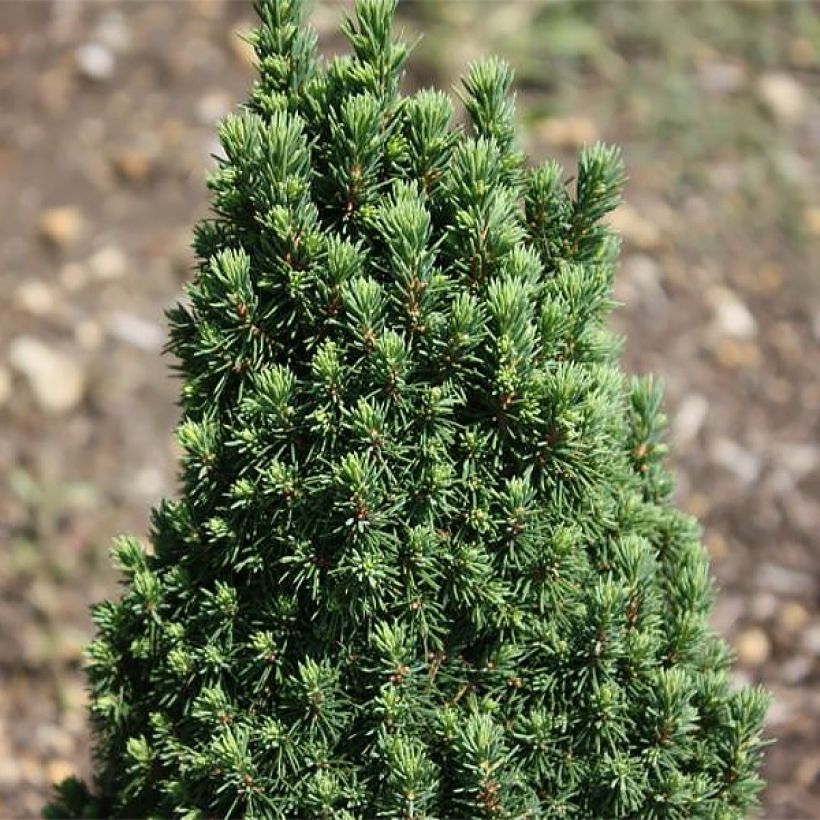

Plant habit
Foliage
Botanical data
Picea
glauca
Piccolo
Pinaceae
White Spruce, Canadian Spruce, Skunk Spruce, Cat Spruce, Black Hills Spruce, Western White Spruce, Alberta White Spruce, Porsild Spruce
Cultivar or hybrid
Other Picea
Planting and care
Plant from September to November and from February to April in deep, well-drained, light, neutral or slightly acidic soil, that is moist to occasionally dry. Sandy or rocky soil that is not too chalky will be perfect. Choose a sunny or semi-shaded spot sheltered from prevailing winds. In overly sunny and dry conditions, it will be more susceptible to attacks from red spider mite. Soak the root ball well before planting, or even better, soak it in a bucket of water for fifteen minutes to moisten it thoroughly. Add organic matter to the planting hole and water generously in the first few years, especially during prolonged drought. Apply a special conifer fertiliser every year in April and weed the soil in summer. This extremely hardy conifer fears heavy, waterlogged soils in winter. Pruning is not necessary, but you can lightly trim the outer edges if needed to perfect its conical habit.
Planting period
Intended location
Care
-
, onOrder confirmed
Reply from on Promesse de fleurs
Conifers
Haven't found what you were looking for?
Hardiness is the lowest winter temperature a plant can endure without suffering serious damage or even dying. However, hardiness is affected by location (a sheltered area, such as a patio), protection (winter cover) and soil type (hardiness is improved by well-drained soil).

Photo Sharing Terms & Conditions
In order to encourage gardeners to interact and share their experiences, Promesse de fleurs offers various media enabling content to be uploaded onto its Site - in particular via the ‘Photo sharing’ module.
The User agrees to refrain from:
- Posting any content that is illegal, prejudicial, insulting, racist, inciteful to hatred, revisionist, contrary to public decency, that infringes on privacy or on the privacy rights of third parties, in particular the publicity rights of persons and goods, intellectual property rights, or the right to privacy.
- Submitting content on behalf of a third party;
- Impersonate the identity of a third party and/or publish any personal information about a third party;
In general, the User undertakes to refrain from any unethical behaviour.
All Content (in particular text, comments, files, images, photos, videos, creative works, etc.), which may be subject to property or intellectual property rights, image or other private rights, shall remain the property of the User, subject to the limited rights granted by the terms of the licence granted by Promesse de fleurs as stated below. Users are at liberty to publish or not to publish such Content on the Site, notably via the ‘Photo Sharing’ facility, and accept that this Content shall be made public and freely accessible, notably on the Internet.
Users further acknowledge, undertake to have ,and guarantee that they hold all necessary rights and permissions to publish such material on the Site, in particular with regard to the legislation in force pertaining to any privacy, property, intellectual property, image, or contractual rights, or rights of any other nature. By publishing such Content on the Site, Users acknowledge accepting full liability as publishers of the Content within the meaning of the law, and grant Promesse de fleurs, free of charge, an inclusive, worldwide licence for the said Content for the entire duration of its publication, including all reproduction, representation, up/downloading, displaying, performing, transmission, and storage rights.
Users also grant permission for their name to be linked to the Content and accept that this link may not always be made available.
By engaging in posting material, Users consent to their Content becoming automatically accessible on the Internet, in particular on other sites and/or blogs and/or web pages of the Promesse de fleurs site, including in particular social pages and the Promesse de fleurs catalogue.
Users may secure the removal of entrusted content free of charge by issuing a simple request via our contact form.
The flowering period indicated on our website applies to countries and regions located in USDA zone 8 (France, the United Kingdom, Ireland, the Netherlands, etc.)
It will vary according to where you live:
- In zones 9 to 10 (Italy, Spain, Greece, etc.), flowering will occur about 2 to 4 weeks earlier.
- In zones 6 to 7 (Germany, Poland, Slovenia, and lower mountainous regions), flowering will be delayed by 2 to 3 weeks.
- In zone 5 (Central Europe, Scandinavia), blooming will be delayed by 3 to 5 weeks.
In temperate climates, pruning of spring-flowering shrubs (forsythia, spireas, etc.) should be done just after flowering.
Pruning of summer-flowering shrubs (Indian Lilac, Perovskia, etc.) can be done in winter or spring.
In cold regions as well as with frost-sensitive plants, avoid pruning too early when severe frosts may still occur.
The planting period indicated on our website applies to countries and regions located in USDA zone 8 (France, United Kingdom, Ireland, Netherlands).
It will vary according to where you live:
- In Mediterranean zones (Marseille, Madrid, Milan, etc.), autumn and winter are the best planting periods.
- In continental zones (Strasbourg, Munich, Vienna, etc.), delay planting by 2 to 3 weeks in spring and bring it forward by 2 to 4 weeks in autumn.
- In mountainous regions (the Alps, Pyrenees, Carpathians, etc.), it is best to plant in late spring (May-June) or late summer (August-September).
The harvesting period indicated on our website applies to countries and regions in USDA zone 8 (France, England, Ireland, the Netherlands).
In colder areas (Scandinavia, Poland, Austria...) fruit and vegetable harvests are likely to be delayed by 3-4 weeks.
In warmer areas (Italy, Spain, Greece, etc.), harvesting will probably take place earlier, depending on weather conditions.
The sowing periods indicated on our website apply to countries and regions within USDA Zone 8 (France, UK, Ireland, Netherlands).
In colder areas (Scandinavia, Poland, Austria...), delay any outdoor sowing by 3-4 weeks, or sow under glass.
In warmer climes (Italy, Spain, Greece, etc.), bring outdoor sowing forward by a few weeks.


































